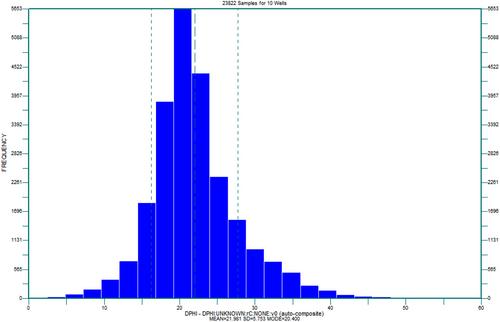A phased workflow to define permit-ready locations for large volume CO2 injection and storage
Ramon H. Trevino, Susan D. Hovorka, Dallas B. Dunlap, Richard C. Larson, Tucker F. Hentz, Seyyed A. Hosseini, Shuvajit Bhattacharya, Michael V. DeAngelo
下载PDF
{"title":"A phased workflow to define permit-ready locations for large volume CO2 injection and storage","authors":"Ramon H. Trevino, Susan D. Hovorka, Dallas B. Dunlap, Richard C. Larson, Tucker F. Hentz, Seyyed A. Hosseini, Shuvajit Bhattacharya, Michael V. DeAngelo","doi":"10.1002/ghg.2253","DOIUrl":null,"url":null,"abstract":"<p>To-date, only two UIC Class VI permits have been issued by the US Environmental Protection Agency. We illustrate a four-phase workflow to first identify regional storage resources and then down-select sites to yield permit-ready locations that can accept and store large volumes of CO<sub>2</sub>. Specific permit requirements should guide objectives and define deliverables of respective workflow phases. In the first phase we used available regional data and screened structure and injection zones to locate resources that match CO<sub>2</sub> volumes planned to be captured. Available data were also used to assess presence and depth of usable groundwater, the key resource being protected via permitting. We then used advanced, closed-form, analytical solutions (EASiTool) to estimate CO<sub>2</sub> injectivity into each hydrologically connected injection compartment. In the second phase we acquired and conditioned additional wireline logs and leased available seismic datasets. We interpreted the depositional systems from wireline well-log character and mapped sandbody geometry to interpolate injection and confining-zone distribution. Using available data, we mapped faults and locations of freshwater and overpressure (or other capacity-limiting geologic parameters) in more detail. In the third phase, we used the augmented geologic data to develop a static model for the selected area, extracted the areas of highest interest, and generated and ran dynamic (flow) models. In a fourth phase, we reduced major uncertainties identified in earlier phases. Our case study indicates that to complete preparation of a permit application requires (1) improved lithologic characterization information (thicknesses and horizontal and vertical connectivity) and (2) better definition of poorly defined local faults. © 2023 The Authors. <i>Greenhouse Gases: Science and Technology</i> published by Society of Chemical Industry and John Wiley & Sons Ltd.</p>","PeriodicalId":12796,"journal":{"name":"Greenhouse Gases: Science and Technology","volume":"14 1","pages":"95-110"},"PeriodicalIF":2.7000,"publicationDate":"2023-12-19","publicationTypes":"Journal Article","fieldsOfStudy":null,"isOpenAccess":false,"openAccessPdf":"https://onlinelibrary.wiley.com/doi/epdf/10.1002/ghg.2253","citationCount":"0","resultStr":null,"platform":"Semanticscholar","paperid":null,"PeriodicalName":"Greenhouse Gases: Science and Technology","FirstCategoryId":"93","ListUrlMain":"https://onlinelibrary.wiley.com/doi/10.1002/ghg.2253","RegionNum":4,"RegionCategory":"环境科学与生态学","ArticlePicture":[],"TitleCN":null,"AbstractTextCN":null,"PMCID":null,"EPubDate":"","PubModel":"","JCR":"Q3","JCRName":"ENERGY & FUELS","Score":null,"Total":0}
引用次数: 0
引用
批量引用
Abstract
To-date, only two UIC Class VI permits have been issued by the US Environmental Protection Agency. We illustrate a four-phase workflow to first identify regional storage resources and then down-select sites to yield permit-ready locations that can accept and store large volumes of CO2 . Specific permit requirements should guide objectives and define deliverables of respective workflow phases. In the first phase we used available regional data and screened structure and injection zones to locate resources that match CO2 volumes planned to be captured. Available data were also used to assess presence and depth of usable groundwater, the key resource being protected via permitting. We then used advanced, closed-form, analytical solutions (EASiTool) to estimate CO2 injectivity into each hydrologically connected injection compartment. In the second phase we acquired and conditioned additional wireline logs and leased available seismic datasets. We interpreted the depositional systems from wireline well-log character and mapped sandbody geometry to interpolate injection and confining-zone distribution. Using available data, we mapped faults and locations of freshwater and overpressure (or other capacity-limiting geologic parameters) in more detail. In the third phase, we used the augmented geologic data to develop a static model for the selected area, extracted the areas of highest interest, and generated and ran dynamic (flow) models. In a fourth phase, we reduced major uncertainties identified in earlier phases. Our case study indicates that to complete preparation of a permit application requires (1) improved lithologic characterization information (thicknesses and horizontal and vertical connectivity) and (2) better definition of poorly defined local faults. © 2023 The Authors. Greenhouse Gases: Science and Technology published by Society of Chemical Industry and John Wiley & Sons Ltd.
确定大量二氧化碳注入和封存许可就绪地点的分阶段工作流程
迄今为止,美国环境保护局仅颁发了两份 UIC VI 级许可证。我们举例说明了一个四阶段工作流程,首先确定区域封存资源,然后向下选址,最终确定可接受并封存大量二氧化碳的、可获得许可的地点。具体的许可要求应指导各工作流程阶段的目标并确定可交付的成果。在第一阶段,我们利用现有的区域数据和筛选出的结构与注入区,找到与计划捕获的二氧化碳量相匹配的资源。我们还利用现有数据评估了可用地下水的存在和深度,这是通过许可保护的关键资源。然后,我们使用先进的闭式分析解决方案(EASiTool)来估算每个水文连接注入区的二氧化碳注入量。在第二阶段,我们获取并调整了更多的有线测井记录和租赁的可用地震数据集。我们根据井线测井记录的特征解释了沉积系统,并绘制了砂体几何图形,以推测注入区和封闭区的分布。利用现有数据,我们更详细地绘制了断层以及淡水和超压(或其他限制产能的地质参数)的位置。在第三阶段,我们利用扩充的地质数据为选定区域建立静态模型,提取最感兴趣的区域,并生成和运行动态(流动)模型。在第四阶段,我们减少了前几个阶段发现的主要不确定因素。我们的案例研究表明,要完成许可证申请的准备工作,需要:(1)改进岩性特征信息(厚度以及水平和垂直连通性);(2)更好地定义定义不清的局部断层。© 2023 作者。温室气体:由化学工业协会和 John Wiley & Sons Ltd. 出版。
本文章由计算机程序翻译,如有差异,请以英文原文为准。



